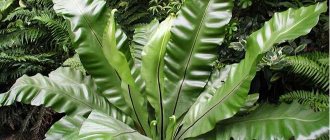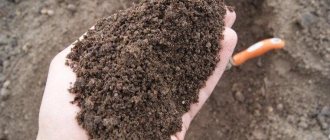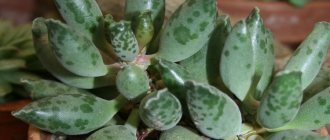Rosehip is a plant widely used in both official and traditional medicine. It has found application in the food industry and cooking. Rosehip flowers and leaves are used as a substitute for black tea. It is planted in parks and near houses as an ornamental plant and honey plant.
Types of rose hips
The following species can be found in the CIS:
- wrinkled rose hip – Rosa rugosa Thunb.,
- dog rose – Rosa canina L.,
- needle hips – Rosa acicularis L.,
- prickly rose hip – Rosa spinosissima L.,
- cinnamon rosehip,
- hairy rosehip – Rosa villosa L.,
- Daurian rosehip – Rosa davurica Pall.,
- loose rosehip,
- Albert's rosehip,
- Begger's rosehip – Rosa beggerana Schrenk.,
- Fedchenko rosehip – Rosa fedtschenkoana Regel. and etc.
The most widespread is the cinnamon rosehip, which is most often used by official medicine.
Latin name: Rosa cinnamomea L.
Other names: May rose hips, cinnamon rose, rose hips, rose hips, rooster berries, sworborina.
Rosehip as a plant
Rosehip belongs to the genus of plants of the Rosaceae family.
This is a deciduous shrub (shrub), sometimes evergreen, with an erect, creeping or climbing stem, which can have a height of 25 cm - 10 m. Scientists identify about 140 species of rose hips. Of these, the most widespread is Rosehip May. The following types of rose hips are used for economic needs in Russia and the world: May rose hips, Daurian rose hips, Spiny rose hips, Begger's rose hips, dog rose hips, Apple rose hips, Prickly rose hips.
What are the healing properties of rose hips? In order to answer this question, it is necessary to disassemble everything that makes up the plant. Let's start with its fruits.
Botanical description of rose hips
Cinnamon rose hips are a shrub up to 2.5-3 m high. The branches are thin and shiny. The color is brownish-brown or brownish-red. The spines are few, small, curved downwards, usually located in twos at the base of the leaves. There are spines and bristles.
Rosehip leaves are unpaired, consisting of 7-9 lateral leaflets. The leaves are thin, oblong, narrowed towards the base, twisted at the top, have denticles along the edge, covered with bluish-green hairs, the network of veins is very protruding.
Rosehip flowers are arranged singly or collected 2-3 in a few umbrella-shaped inflorescences. The color is pink, pale or dark red. Diameter 3-5, up to 6, cm. The aroma of rosehip is delicate and pleasant.
Rosehips are small (up to 1.5 cm in diameter), round or oblong, smooth, glabrous, fleshy, and contain numerous seeds (fruit-nuts). The sepals are retained at the top. Color orange, orange-red or red. The inner walls of the fruit are covered with many very sharp bristly hairs.
Rose hips bloom in May-July, the fruits ripen in August-September and remain on the branches until winter.
Rose hips propagate by seeds, suckers and green cuttings. It begins to bear fruit at 2-3 years of age, reaching a maximum at 10-12 years.
Features of rosehip
Rosehip is a deciduous, less often evergreen, shrub. Its shoots can be creeping, climbing or erect; their height (or length) can vary from 0.15 to 10 meters. Most often, rose hips are multi-stemmed shrubs, the height of which reaches 200–300 centimeters, their life expectancy is from 30 to 50 years. In Germany there is a rose that is considered the oldest; according to various experts, its age is 400–1000 years. The trunk of this rose reaches about half a meter in girth, while the height of the bush is 13 meters.
The plant has a tap root system. The main root penetrates the soil to a depth of 500 cm. However, most of the roots are located at a depth of no more than 0.4 m within a radius of 0.6–0.8 m from the plant. Arched and erect branches form a large number of branched stems, which can be colored dark red, red-brown, dark brown, brown-violet, brown-black or gray with felt pubescence. On stems and branches, thorns are placed in pairs or scattered. The older the stem, the harder and thicker the thorns on it. There are also thornless species, for example, the pendulous rose hip. The thorns protect the bush from animals so that they do not eat it, and their task is also to hold the branches among other plants. The odd-pinnate leaf blades are located on long petioles; they are colored light gray, pale red or green. The leaves are arranged spirally on the stems. Wild species have 7 or 9 leaves, and cultivated ones most often have 5. Leathery, hard leaf plates are wrinkled or smooth, elliptical or round in shape. The base of the leaves can be heart-shaped, round or wedge-shaped. The edge of the plates is serrated-crenate, serrated or doubly serrated.
The diameter of bisexual flowers varies from 15 to 100 mm, they can be part of paniculate or corymbose inflorescences, and solitary ones are also found. As a rule, the flowers have a very pleasant smell, but there are species that have an unpleasant aroma, for example, fetid rose hips. As a rule, the corolla of rose hips is five-petalled, but it can also be semi-double or four-petalled. Flowers can be white, pink, yellow, cream or red. The plant blooms in May or June, flowering duration is 7–20 days. At the age of two or three years, this plant begins to bear fruit. The fruits are cynarhodia (multi-nuts) with a special shape, their diameter varies from 10 to 15 mm. They are naked or covered with bristles, and are red, orange, purple or black in color. Inside, the fruits are coarsely hairy and contain a large number of single-seeded nuts. Their ripening is observed in August-September.
Growing and using rose hips - Successful project - Inter
Habitat
Cinnamon rose hips are widespread in most of the CIS. It can be found in the European part - with the exception of the Baltic countries and the Black Sea region of Russia, in Western Siberia - with the exception of the Far North, in Eastern Siberia - in the Angara-Sayan region, in the Yenisei region the plant is rare, as well as in Central Asia.
Rose hips grow in sparse mixed and deciduous forests, among shrubs, along the edges, clearings, meadows, along ravines and mountain gorges, on rocky slopes, preferring the banks of rivers, lakes and other bodies of water. There are both single plants and groups (thickets).
Branches, leaves and stems of rose hips
Back in the Middle Ages, a decoction of the branches and stems, as well as an infusion of rosehip leaves, was used in the fight against malaria (in Yakut folk medicine you can find the use of a decoction of the stems and leaves of rose hips against malaria). An infusion of leaves, as well as a decoction of the branches and stems of rosehip, is used in folk medicine for radiculitis and rheumatism (you need to add an infusion or decoction to a hot bath).
An infusion of dog rose leaves is used as an analgesic for colic, gastralgia, menstrual pain, and also as a diuretic. It is also used to care for oily and problematic skin, helping to relieve dryness and irritation.
Collection and preparation. How to dry rose hips
Fruits, seeds, roots, leaves, flowers, and branches of the plant are harvested for medicinal purposes.
Rosehip fruits (berries) are harvested when they acquire a characteristic color for the species, but are slightly unripe. In this form it is easier to collect them without fear of crushing them with your fingers. Rosehip leaves that fall on the fruit are not thrown away, but are used for brewing. The collection must be completed before frost, since in this case, when dried, the fruits lose most of their vitamins. Fresh berries can be stored for up to 3-4 days.
Dry the raw materials by spreading them in a thin layer in a well-ventilated area, remembering to stir them periodically. You can use a gas oven for these purposes, drying at a temperature not exceeding 40°C. Shelf life – 2 years. This is the best way to preserve rose hips for the winter.
Rosehip leaves and flowers are harvested during flowering. Shelf life: leaves – 2 years, flowers – one year.
Rosehip roots are dug in late autumn, cleared of soil, but not washed, cut into pieces and air dried. Shelf life – 2 years.
Not all types of rose hips have a high vitamin composition. When collecting fruits for this purpose, select species with a vitamin C content of at least 1%. This is the rosehip of Albert, Begger, Fedchenko, spiny, loose, cinnamon, Daurian, wrinkled.
Dog rose with a small content of vitamins is used to make the drug “Holosas”, which has a choleretic effect. This species is widespread in the southern regions of Ukraine, Moldova and the Caucasus. Its distinctive feature is that the sepals bend down after flowering and fall off long before the fruits ripen. That's why dog rose does not have a hole at the top of the berries.
Caring for rose hips in the garden
Rose hips just planted in open ground will need to be watered abundantly and often during the first year. It should be remembered that this crop is highly resistant to drought, so in other years it does not need systematic watering. If there is a prolonged drought and heat, then you will need to pour 50 liters of water at a time under one adult bush, and 20–30 liters at a time under a young bush, and that’s all. Throughout the season, this plant should be watered 3 or 4 times.
In order for the shrub to grow and develop normally, from the second year of growth it must be fed with nitrogen fertilizers, adding them to the soil. The plant is fed for the first time at the beginning of spring, the second time during the period of active growth of stems (June–July), and the third time in September. Also, once every 3 years, compost or humus must be added to the soil under the bush (3 kilograms per plant). Each time the rose hips are fed, the soil under the bush must be watered and loosened, and then its surface is covered with a layer of mulch.
From the age of three, such a plant begins to require systematic pruning. To do this, you need to cut out all weak, disease-affected or dried stems, and also shorten annual growths to 1.7–1.8 m. When the bush is 5 years old, it should include from 15 to 20 branches of different ages, which are evenly distributed removed from each other. Branches that are more than 7 years old must be replaced. It is recommended to prune such a crop in the spring before sap flow begins; the fact is that it tolerates pruning in the fall extremely poorly. Please note that excessive shortening of the stems will lead to active growth of young shoots in the next season, but they will not bear fruit.
Since rosehip is a rather thorny plant, its fruits must be collected while protecting your hands with thick gloves and wearing durable clothing. The fruits are collected gradually, since their ripening begins in August and ends only in mid-October. All fruits must be collected before frost, otherwise they may lose their properties.
Rose hip transplant
Sometimes it becomes necessary to transplant an already mature rosehip bush to another place. This can happen, for example, due to planting in an area that is not suitable for it or if the soil becomes too depleted. It is recommended to transplant in the spring or in October and November. The preparation of the pit and nutrient soil should be done in advance. A cloudy day is good for transplanting. The bush must be carefully dug up and after the soil is loosened, the bush is pulled out along with the earthen lump, while trying not to injure its root system. Immediately after the bush is removed from the ground, it must be moved to a new location. It should be remembered that the root system of this crop reacts extremely negatively to heat; therefore, the longer it remains on the surface, the less likely it is that the shrub will successfully take root after replanting. During flowering, replanting cannot be done; it is recommended to do this either before sap flow begins or when it ends.
Rosehip propagation
Rosehip seeds are collected in August, when the fruits are still brown and unripe, and their shell is relatively soft. Seeds are sown in October directly into open soil; the furrows should be filled with sawdust or humus on top. In order for seedlings to appear faster in spring, a frame is constructed over the crops, on which plastic film should be stretched. After the seedlings have formed 2 true leaf blades, you can begin planting them. If sowing is planned for spring, then it is best to stratify the seeds; to do this, they are combined with river sand or peat and placed in a cool place with a temperature of 2–3 degrees (for example, a refrigerator). Do not forget to periodically remove and mix the seeds.
If you propagate rose hips by root suckers, you will be able to preserve all the varietal characteristics of the parent bush. In spring or autumn, it is necessary to find a shoot, the height of which can vary from 0.25 to 0.4 m. This shoot must be cut off from the mother plant using a shovel, and then transplanted to a new place. There is another method of propagation by root shoots. The offspring is not separated from the mother bush; it should be hilled up high and watered promptly throughout the season and, if necessary, soil should be added under it. The offspring will grow adventitious roots, and in the fall of the next season it can be cut off from the parent bush, and with the onset of the next spring, carefully removed from the soil and planted in a new place.
Vitamins from the garden Rosehip pruning. Website "Garden World"
Chemical composition
Cinnamon rose hips are the champion among fruit and berry plants in terms of variety and quantity of vitamins. It contains the maximum amount of vitamins P and C (10-18%) valuable for the body. It contains 10 times more ascorbic acid (vitamin C) than black currants, 50 times more than lemons and 100 times more than apples. One to three rose hips can provide an adult’s daily requirement for this vitamin.
Rosehip vitamins are also represented by carotene (12-18 mg%), vitamins B1, B2, K, E, PP. Macro- and microelements include iron, potassium, manganese, phosphorus, calcium, and magnesium. In addition, sugars (up to 24%) are found in rose hips - glucose and fructose, pectin substances (up to 4%), citric and malic acids (up to 2%), flavone glycosides, kaempferol, quercetin, tannins and coloring substances, essential oil.
Rosehip leaves are not deprived of vitamins either. They contain up to 1.5% ascorbic acid. Essential rose oil is obtained from the petals of rosehip flowers.
Rosehip leaves, branches and roots contain up to 4.5% tannins.
The seeds produce valuable rosehip oil, rich in carotene and vitamin E, containing linoleic, linolenic, oleic, palmitic, and stearic acids.
Description of the plant
Rosehip is a summer green or evergreen shrub, with erect or climbing, sometimes creeping on the ground, recumbent or creeping stems up to 10 m high or long, covered with hairs or glands. The presence of the latter is associated with a more or less intense aroma emitted by plants. Some species send out underground shoots, which become lignified and form colonies.
Photo: rosehip flowers and berries
Spikes
The trunk and branches are covered with thorns, popularly called thorns. They protect the rosehip from being eaten by animals and help it stay supported. The thorns of the same shrub can be the same or different and differ in shape on short and long shoots. There are especially many of them in areas of the plant located close to the ground.
Leaves
The cutting leaves, imparipinnate, are arranged alternately, most often consisting of 5-9 leaflets, sometimes of 3-4 or 10-19. An exception is the Persian rose (lat. Rosa persica) with simple leaves without stipules.
The plates are smooth, covered with glands or hairs. Small thorns are sometimes found on the stems. The pinnate leaves are of different shapes - from elliptical to ovate, obovate or round, mostly entire or serrated-sawtooth, less often serrated. Stipules are often present, free or fused with the petiole.
Flowers
The flowers are collected in cluster-shaped, paniculate, sometimes umbellate inflorescences, which are apical or lateral. Apical leaves are often formed. The subchassis is missing. There are 5 sepals, only the silky rose hip (lat. Rosa sericea) has four.
Sepals are lanceolate, lamellar, entire, rarely pinnately divided or pinnately dissected. The calyx is covered with hairs or glands. By the time the fruits are ripe, the sepals fall off or remain, crowning them in the shape of a crown.
The diameter of the corolla is 1-10 cm. Five (one species has 4) petals ranging from white and yellow to pink and red. Stamens from 20 to 265. There are numerous (4-140 pieces) unfused carpels. The pistils are usually free, in some species fused to each other.
Fruit
The fruits are polynuts, or cynorhodias. Single-seeded nuts are yellow to brown in color, surrounded by more or less fleshy hypanthium, often covered inside with hairs. Ripe rose hips are soft or hard, sweet and sour in taste, often red to orange, less often brown to black.
On some plants the fruits last a long time, while on others they fall off early.
Read also: Currants - description, beneficial and harmful properties, composition, calorie content, recipes, photos
Interesting Facts
- The rose hip has a symbolic meaning in German culture. Superstitions and myths that arose during the Middle Ages are associated with it. The fruits were eaten at Christmas and New Year to appease fate and ward off misfortune. In order to protect the house from witchcraft, they were nailed to the window frames.
- The Slavs believed that thorny bushes were created by the devil, since people, having been injured by its sharp thorns, curse, and this is a great sin.
- In Christianity, the plant is a symbol of asceticism, purity, beauty, and youth.
Medicinal and beneficial properties of rose hips
Cinnamon rose hips have the following properties:
- antisclerotic,
- capillary strengthening,
- hematopoietic,
- choleretic,
- diuretic,
- astringent (roots, branches, leaves, seeds)
- antiseptic (roots),
- anti-inflammatory,
- regenerating,
- tonic,
- restorative,
- adaptogenic, etc.
Rosehip cinnamon. Therapeutic effects on the body
Rosehip is a plant that has numerous beneficial and medicinal properties and a wide range of effects on the human body, but it should be remembered that plants are also medicines, many of which have a strong effect, and some are poisonous, and before you start taking them, you should ALWAYS consult with a herbalist or doctor you trust. The information about rose hips given below is for informational purposes only.
Cardiovascular diseases
The medicinal properties of rose hips have proven themselves well as a means for the treatment and prevention of cardiovascular diseases. It has been clinically proven that regular consumption of fruits reduces cholesterol levels in the blood and prevents its deposition on the walls of blood vessels. Based on this, they are indicated for atherosclerosis. Also for these purposes, the use of pharmaceutical preparations “Karotolin” and “Rose hip oil” is recommended.
Rose hips have a beneficial effect on blood vessels, strengthening them and reducing permeability, and help normalize capillary circulation. Aqueous extracts are recommended for use in hypertension, especially with impaired salt metabolism. Alcohol tincture of rose hips helps with low blood pressure. Also, plant preparations relieve headaches.
The fruits in the form of a decoction are also useful for heart diseases. For these purposes, not only rose hips are used, but also a decoction of the roots, which also helps with hypertension.
Brain diseases
Based on the effect of rosehip preparations on blood vessels, herbalists often recommend them for the treatment of vascular diseases of the brain.
Gastrointestinal diseases
Rosehip has great benefits for the gastrointestinal tract. Fruit preparations have a beneficial effect on it and are included in many preparations for the treatment of this type of disease. They are used for low acidity of gastric juice, chronic anacid and achilic gastritis, as they help eliminate inflammatory processes in the stomach.
Pharmacy preparations “Karotolin” and “Rosehip Oil” show good results for the treatment of gastric and duodenal ulcers (microenemas), recommended for increased secretion and acidity of gastric juice.
A decoction of rosehip branches or roots is used as an astringent for diarrhea, dysentery, and bloody diarrhea. Branches and leaves help eliminate stomach cramps and flatulence. The roots are used as an anthelmintic.
Colds and bronchopulmonary diseases
Rose hips have also been used to treat diseases of the throat, bronchi and lungs. First of all, it is a highly effective remedy for strengthening the immune system and increasing the body’s defenses, which is especially valuable in the autumn-winter and winter-spring periods as a preventive measure for various viral diseases.
For colds and flu, rosehip decoction and tea are recommended for use, which also help cope with cough. Rosehip flowers are also used for these purposes. Pharmaceutical preparations “Karotolin” and “Rose hip oil” are used to lubricate the mucous membrane of the nose and pharynx, as well as in the form of inhalations for a runny nose and pharyngitis.
For ozena, a cotton swab soaked in rosehip oil is inserted into the nasal cavity. Duration of the procedure is 20-30 minutes.
The benefits of rose hips also extend to the lungs. Plant preparations are used for chronic and acute pneumonia; they have a good effect in tuberculosis, especially with hemoptysis.
Rose hips are part of Traskova's anti-asmatic medicine.
Liver and gallbladder diseases
The beneficial and medicinal properties of rose hips are used by official and traditional medicine to treat all liver diseases, as well as for preventive purposes to improve the condition of this organ. Fruit preparations are used as a mild choleretic agent for cholecystitis.
The pharmaceutical drug "Holosas", created back in the 30s of the last century, has not lost its relevance for the treatment of chronic diseases of the liver and biliary tract, hepatitis, cholecystitis.
An infusion of the shell of rose hips without seeds and internal hairs, as well as a decoction of seeds or roots, are an effective means for crushing and removing any stones in the body, including those in the gall bladder.
Metabolic diseases
Herbal medicine uses the benefits of rose hips to treat various diseases associated with metabolic disorders, including diabetes.
Blood diseases
Rose hips, rich in iron and vitamins, are a good remedy for the treatment of iron deficiency and other anemias, as well as for their prevention.
In addition, the berries are used for some blood diseases, such as hemophilia, and an infusion of milk is used for leukemia. Rosehip decoction also helps with various bleedings (nasal, pulmonary, uterine, etc.)
Bladder and kidney diseases
The benefits of rose hips (fruits) have been proven for the treatment of various diseases of the kidneys and bladder, such as cystitis, nephritis, urolithiasis, etc. Also, for cystitis, they drink a decoction of the roots.
For women
Pharmacy preparations “Karotolin” and “Rose hip oil” are used in gynecology, as well as for the treatment of cracked nipples.
In addition, rose water and rose toilet vinegar, used in cosmetology, are obtained from the flowers of the plant.
For men
Men can discover the use of rose hips in the form of a decoction of the fruit as a means to enhance potency.
Eye diseases
It is effective to use the medicinal properties of rose hips in the form of a decoction of the fruits orally for eye diseases accompanied by minor hemorrhages. Also, a decoction or infusion of flowers is used in the form of lotions for conjunctivitis, as an anti-inflammatory and sedative.
For the whole body
The healing and healing role of rose hips for the human body is invaluable. Fruits contain a large number of vitamins, macro- and microelements, as well as other biologically active substances that are important for the normal functioning of the body. Therefore, both official and traditional medicine consider rose hips to be the best remedy for vitamin deficiency and hypovitaminosis, as well as for their prevention.
Rosehip is a natural powerful immunostimulant given to us by nature. It is used as a prophylactic agent during viral diseases. It increases the body's resistance to harmful environmental influences.
The fruits have a beneficial effect on most organs and systems of the body, stimulate the functioning of the endocrine glands, and normalize metabolism, including carbohydrate metabolism. They will bring great benefits to both sick and healthy people. Rosehip preparations are especially indicated for children of all ages, as well as elderly people whose bodies are burdened by many age-related diseases.
Rosehip should be taken daily by people engaged in heavy physical and mental labor, as well as when overworked, to restore performance.
Berries are prescribed for chronic and acute infectious diseases, for patients in the pre- and postoperative period, after suffering serious illnesses.
A decoction of rosehip flowers is used for hypovitaminosis and general weakness.
Pests and diseases of rose hips
This crop is not resistant to diseases or pests. The following pests most often settle on it: sawflies, aphids, leafhoppers, slobbering pennies, spider mites, leaf rollers, bronze beetles and deer beetles.
Sawfly larvae
The larvae of white-banded and descending sawflies gnaw four-centimeter-long passages in young shoots, because of this the stems become dark and dry out. To get rid of such larvae, you need to use insecticidal or pesticide preparations. In autumn, the soil near the bush must be dug up; in this case, the false caterpillars of this pest that appear on the surface will freeze, and the affected stems should be cut off and destroyed before the larvae emerge.
Fruit caterpillars
Young foliage and stems of the plant can be damaged by caterpillars of the fruit moth and 3 different species of roseate leaf roller. If there are few caterpillars, they are removed from the bush by hand. In the spring, before the buds open, the plant must be sprayed with a solution of a pesticide preparation.
Spider mites
Cellular sap from the foliage and stems of shrubs is sucked by spider mites, which are sucking insects. Also, together with aphids, they are the main carriers of viral diseases, for which no effective cure has been found to date. This pest settles on the bush during prolonged drought, especially if it has not been watered for a long time. If you wish, you can try to drive away the ticks; to do this, you need to spray the underside of the leaf blades of the bush with cold water 3 or 4 times a day. And in order to get rid of them quickly and effectively, you can use an acaricide.
Slobbery Penny
On the underside of the plates, as well as in the leaf sinuses, there is a slobbering pennix. This sucking pest feeds on cell sap and secretes a foamy substance. If you touch an insect, it quickly jumps out of the foam and tries to hide. To get rid of such a pest, the bush is treated with an insecticide solution.
Rose leafhopper
The rose hips can be very damaged by the rose hiphopper, which produces 2 or 3 generations per season. Because of it, many white dots appear on the surface of the foliage, the plates become like marble and lose their attractive appearance. After a while they turn yellow and fly away prematurely. To get rid of such a harmful insect, it is necessary to treat the bush and the surface of the area with an insecticide solution 2 or 3 times, and the interval between procedures should be 10–12 days.
rose aphid
Rose hips settle in large colonies on rose hips; they are found on buds, flower stalks and on the underside of leaf blades. Aphids feed on plant sap and transmit viral diseases. In 1 year, this pest can produce more than 10 generations. Preventive treatment is carried out at the beginning of the spring period, for this purpose a solution of a contact insecticide is used. Subsequent spraying can be carried out using a solution of Actellik, Antio, Karbofos, Rogor and other means of similar action.
Deer beetles and bronze beetles
Bronze beetles and stag beetles gnaw out the pistils and stamens in flowers, and also eat the petals. Bushes with light-colored flowers are especially popular among such pests. The beetles are collected early in the morning, at which time they sit, practically motionless. Collected insects must be burned.
Powdery mildew
Most often, this shrub suffers from the following diseases: powdery mildew, black spot, rust, chlorosis and downy mildew.
To get rid of powdery mildew, you need to spray the plant with a suspension of colloidal sulfur (1%) or another fungicide. To make rose hips more resistant to powdery mildew and other diseases, it should be fed with fertilizers containing potassium.
Black spot
In the second half of summer, brown-black spots may form on the petioles and foliage - these are symptoms of black spot infection. If the rosehip is very badly affected, its foliage becomes dark, dries out and flies off. In order to prevent further development of spotting, all infected leaf blades and stems must be removed and destroyed. Under the bushes, the soil is dug up with the formation turnover. In autumn and spring, the plant should be sprayed with insecticidal preparations.
Rust
If a bush is affected by rust, then on the underside of its foliage you can find a large number of dusty spores and small yellow-orange pads. As the disease progresses, deformation of stems, flowers and shoots, as well as drying out of leaf plates, is observed. Cut out and destroy the affected parts of the plant, and dig up the soil under the bush. Before covering the rosehip for the winter, it must be treated with a preparation containing copper, for example, copper sulfate.
Chlorosis
If yellow or white spots form on the surface of the leaf blades, this means that the bush is sick with chlorosis. It develops due to a deficiency of boron, manganese, magnesium, zinc, iron or other substances needed by rose hips. For example, if it lacks iron, then a chlorotic color appears on the entire leaf blade, except for large veins, while chlorosis first affects the apical young leaves. If there is a lack of zinc, the chlorotic color spreads along the edge of the leaf blade, while the color of the leaf does not change along the lateral and central veins. With magnesium deficiency, leaf blades turn yellow and die, but the color of the veins remains green. If a plant does not have enough boron, then the tissues of young leaf blades thicken, and they also turn pale and become fragile. Find out why chlorosis developed, and then add the necessary element to the soil. If desired, you can feed the plant with the necessary element through the foliage using the foliar method.
The greatest danger to this crop is downy mildew (downy mildew). The development of this disease is observed in rainy and hot weather. To combat it, fungicides and agricultural practices are used.
Pests of roses and rose hips
Dosage forms
Rosehip decoction (fruit)
1 tbsp. Pour 200 ml of rose hips into an enamel bowl. hot water, bring to a boil and simmer over low heat (or water bath) for 15 minutes. Remove from heat, cover with a lid, insulate and let steep for 45 minutes. Strain, squeeze out the raw materials. Bring the resulting broth to its original volume using boiled water.
To obtain greater benefits from rose hip decoction, it should be prepared in the evening and left to infuse until the morning.
Take half a glass 2-3 times a day after meals.
Rosehip infusion (fruit). Rose hip tea
2 tbsp. Grind dried rose hips using a coffee grinder, pour half a liter of boiling water, cover with a lid, insulate and leave for 4-5 hours. Strain through 2 layers of gauze.
Drink half a glass 3 times a day before meals. You can add sugar or honey for taste. Used as a vitamin remedy.
Rosehip tincture
100 gr. Grind dried rose hips (fruits) using a coffee grinder, pour in half a liter of high-quality vodka. Cover the container tightly with a lid and leave in a dark place at room temperature for a week, remembering to shake periodically. Strain through 2 layers of gauze, squeeze out the raw materials.
For hypotension, take 20-25 drops three times a day before meals.
Flower decoction
10 gr. pour 200 ml of rosehip flowers. water, bring to a boil and simmer over low heat for 7-8 minutes. Remove from heat, cover with a lid, insulate and leave for an hour. Strain, squeeze out the raw materials.
Drink 0.25 tbsp 2-3 times a day, and also use it to wash the eyes.
Leaf infusion
1 tbsp. pour 250 ml of rosehip leaves. boiling water, cover, wrap and leave until cool. Strain.
Take 2 tbsp. 3-4 times a day.
Indications for use. Atherosclerosis, diarrhea (antibacterial), colic and gastralgia (painkiller), malaria, as a diuretic.
Branch decoction
3 tbsp. Finely chopped young rosehip branches, pour half a liter of water, bring to a boil and simmer over low heat for 10 minutes. Remove from heat, cover with a lid, insulate and let sit for an hour. Strain, bring the resulting broth with boiled water to its original volume.
Take 30 ml. 3-4 times a day before meals.
Indications for use. Diarrhea, dyspepsia, colic, rheumatism, paralysis.
Root decoction
1 tbsp. pour 250 ml of crushed rosehip roots. water, bring to a boil and simmer over low heat for 15 minutes. Remove from heat, cover with a lid, insulate and let steep for 2 hours. Strain, squeeze out the raw materials, bring the resulting broth to its original volume using boiled water.
Drink 0.5 tbsp. 3 times a day before meals. The course of treatment is 7-10 days.
Indications for use. Stones in the kidneys, bladder, pain in the heart, as an astringent for diarrhea.
Rosehip pests
Rose hips, like many country crops, have their own pests. Green roseate aphids, leaf rollers, variegated flies and spider mites damage the crop.
To prevent these pests, rose hips are sprayed before flowering and after the final harvest of the berries. You can use both chemicals and folk remedies. For example, garlic solution before rose hips bloom. In 7 liters of water stir 400 g of ground garlic, 1 tbsp. l. laundry soap. The mixture is infused for 6 hours, then filtered and sprayed.
If the plant is affected by rust, then the bush is sprayed with Topaz. For black spotting, spraying is carried out with 1% Bordeaux mixture.
We recommend studying: tea made from berries will prolong your life and give you a good mood
Rose hip. Contraindications and harm
Rose hips are a plant that has a wide range of applications, both in official and folk medicine, but in order for it to bring only benefits, it is necessary to take into account the possible harm of rose hips.
Rosehip berry preparations should not be taken for thrombophlebitis, as well as circulatory failure. They are also contraindicated for endocarditis (inflammation of the inner lining of the heart). People with high acidity of gastric juice should be careful when consuming berries, especially if they have gastritis.
Long-term and uncontrolled use of rosehip roots can lead to constipation.
After drinking rosehip syrup, you may experience bloating and rumbling in the stomach. In this case, it should be consumed with dill, parsley or celery.
The acids contained in rose hips can destroy tooth enamel. Therefore, after each use of fruit preparations, you should thoroughly rinse your mouth with warm water or warm soda water.
No matter how beneficial rosehip is, nevertheless, before people with severe chronic diseases, pregnant women and children start taking it, they should consult with a herbalist or a doctor you trust.
Sources:
- G. Sviridonov. Forest garden.
- L.G. Dudchenko, V.V. Krivenko. Healing food plants.
- I.N. Putyrsky, V. Prokhorov. Universal encyclopedia of medicinal plants.
- Lavrenova G.V., Lavrenov V.K. Encyclopedia of medicinal plants. Volume 2.
- Rim Akhmedov. Plants are your friends and foes.
- Wikipedia
- Rose hip dishes
Rosehip plant: planting and care
The shrub is unpretentious in care. It is preferable to plant in the garden in mid-autumn in well-lit areas of the garden. Considering that the root system is quite developed and very deep, it is not recommended to place it in lowlands where moisture can accumulate, in areas with nearby groundwater. Excessive moisture leads to rotting of the rhizome. The soil is preferably fertile, neutral acidity. The soil should be loose and well drained.
Young seedlings need regular watering, but you should avoid waterlogging the soil. Mature bushes can do without watering, being content with natural precipitation. In the hot, dry season, water should be watered as the soil dries out.
For intensive growth and good fruiting, the plant needs regular feeding. They begin to fertilize the next year after planting, adding nitrogen fertilizers to the soil in spring, autumn and summer. In early spring and late autumn (in preparation for winter), fertilizing with organic fertilizers (humus) is also carried out.
Proper care involves regular pruning. It is carried out both for crown formation and for sanitary and health purposes. In early spring, before the buds swell, damaged shoots are pruned, thinned out and a crown is formed. Young branches are pruned, those that have reached the age of seven are completely cut out, giving the shrub the opportunity to renew itself.
High-yielding rosehip varieties
Most gardeners try to purchase varieties of rose hips with large fruits and a small number of thorns. There are natural species containing large amounts of vitamins. These are Daurian rosehip, spiny rosehip, Alberta rosehip, alpine rosehip, Fedchenko rosehip, apple rosehip, and gray rosehip.
They served as the basis for the creation of vitamin varieties:
- Vitamin VNIVI is frost-resistant, shoots grow up to 2 meters, medium-sized pink flowers, rich red fruits (2 g), yield – 1 kg (hereinafter the yield of a 5-year-old bush is indicated);
- Globe - frost-resistant, medium-high (shoots no higher than 1.5 m), unusual flowers - dark edges of light pink petals, light red fruits (4 g), yield - up to 1.6 kg;
- Large-fruited VNIVI is a remontant medium-high variety (less than 1.5 m), the bush is highly branched, the shoots are strongly thorny, the flowers (80-100 mm) are pink, the fruits (8 g) are rich orange, almost red, in color, the yield is about 2, 5 kg;
- Oval - medium-high shoots (1.2-1.5 m), white flowers (up to 70 mm), juicy fleshy fruit (12 g) red, yield - 2 kg.
Rosehip flowers (petals)
Rose oil is obtained from rose flowers and is actively used in aromatherapy. It is also used to improve the taste and smell of medicines. In Bulgaria, based on this oil, the drug “Rozanol” is produced, which is used for diseases of the biliary tract, liver, and urolithiasis. Dry crushed rose petals are present in herbal soothing pillow fillings.
Rose petals are present in herbal preparations, which in folk medicine are used to strengthen the immune system, for influenza, neurasthenia, conjunctivitis (in the form of drops), hemorrhoids, allergic manifestations, ulcers and long-term non-healing wounds. Rosehip petals can be used internally for diseases of the gastrointestinal tract, diarrhea, hypertension and atherosclerosis.
Rose hips truly have healing powers. Therefore, do not neglect this plant when you have it in your garden, take a closer look at it, and think about collecting and preparing it. Currently, it is widely used in modern and folk medicine, the cosmetic industry, and also in cooking.
Rosehip jam . Rinse the ripe rose hips, remove the seeds and remove the hairs. Then for 1 kg of peeled fruit you need to take ½ cup of water and boil until softened. Rub the softened fruits through a sieve (stainless steel) and cook for about an hour. First you need to boil without adding sugar, but 15 minutes after boiling, about 800 g of sugar is needed per 1 kg of the resulting puree. Finish cooking. Distribute the finished jam into glass liter or 1.5 liter jars and pasteurize in boiling water for 20–25 minutes.
Author: Ekaterina Solovyova
Please note that the information presented on the site is for informational and educational purposes only and is not intended for self-diagnosis and self-medication. The selection and prescription of medications, treatment methods, as well as monitoring their use can only be carried out by the attending physician. Be sure to consult a specialist.
Questions about rose hips
Tree or shrub
Wikipedia says that Rosehip is a deciduous shrub with straight or creeping branches. Depending on natural conditions or care for the bush, it grows to different heights, but not more than 3 m .
Dog-rose fruit
Other sources also say that it is a shrub of varying heights and does not have a central trunk so that it can be classified as a tree.
Useful features
Rose hips contain many vitamins and other beneficial substances. And therefore the plant has many features :
- The fruits are used to make teas, pastes, jams, compotes, sweets and much more.
- Jam is made from Rosehip petals
- In Slovenia, the fruits are added to wines and give them a special taste.
- In the Caucasus, young shoots were eaten, and young leaf blades were brewed into tea .
- Pharmacological factories make various vitamins, syrups, and extracts .











